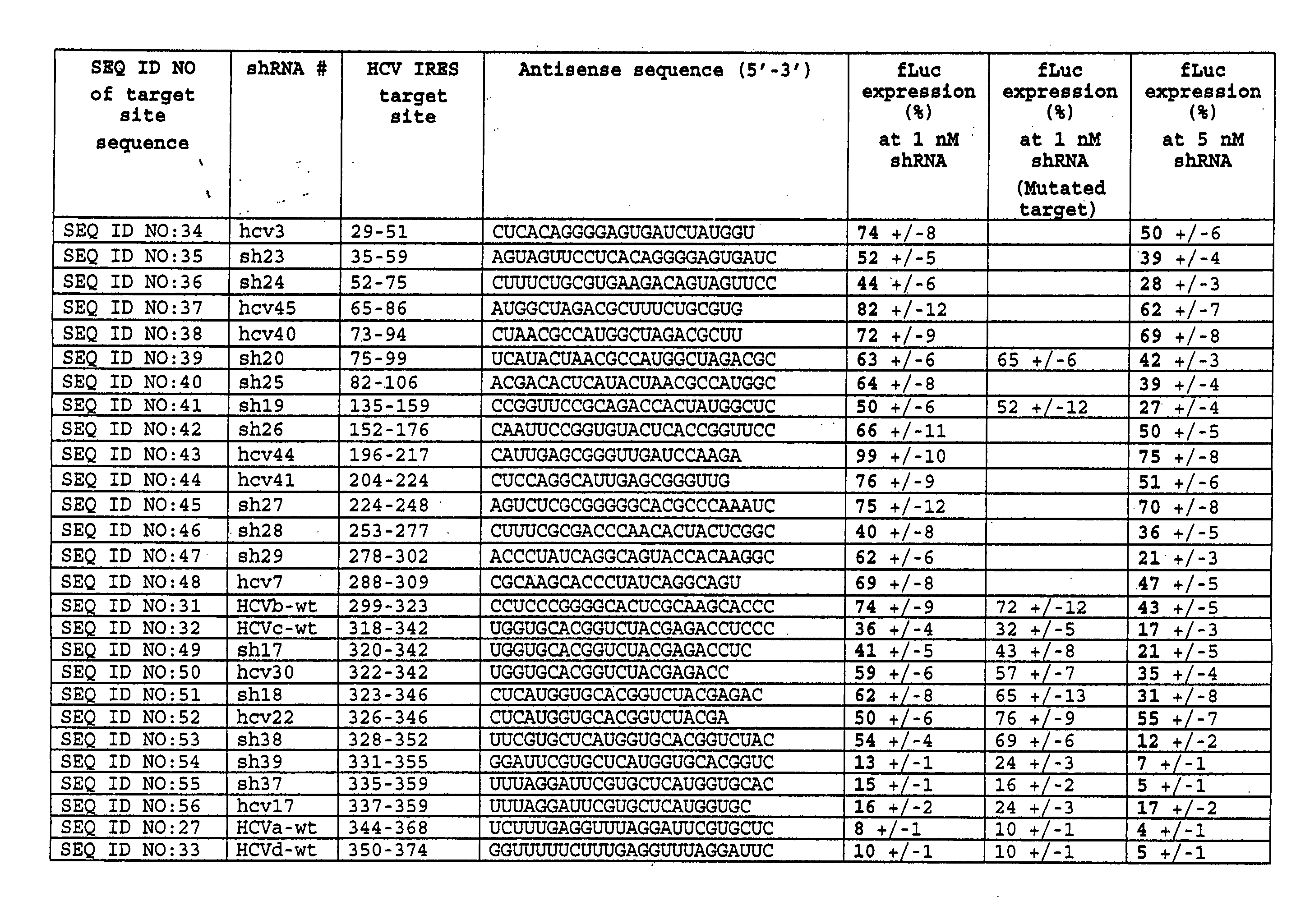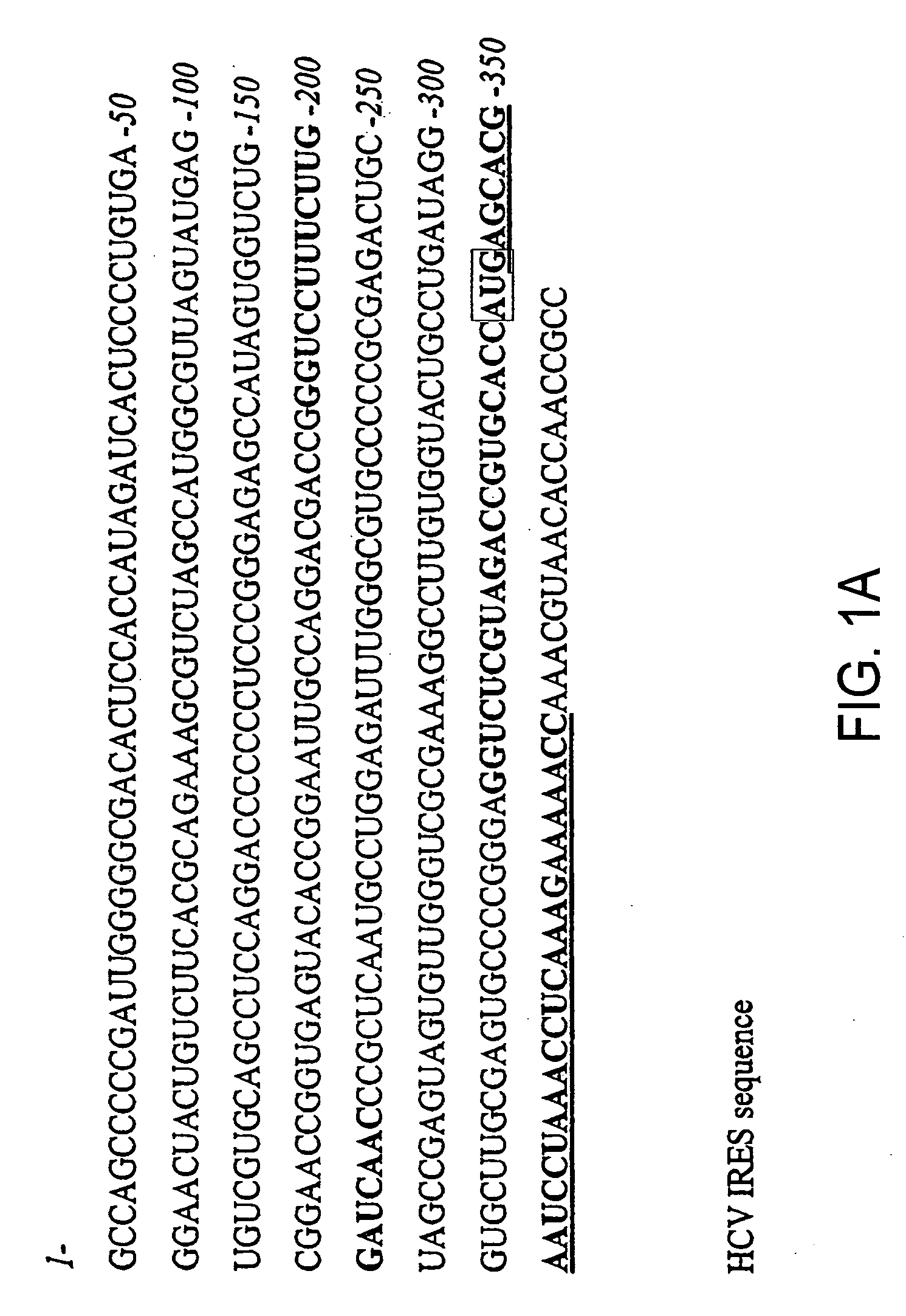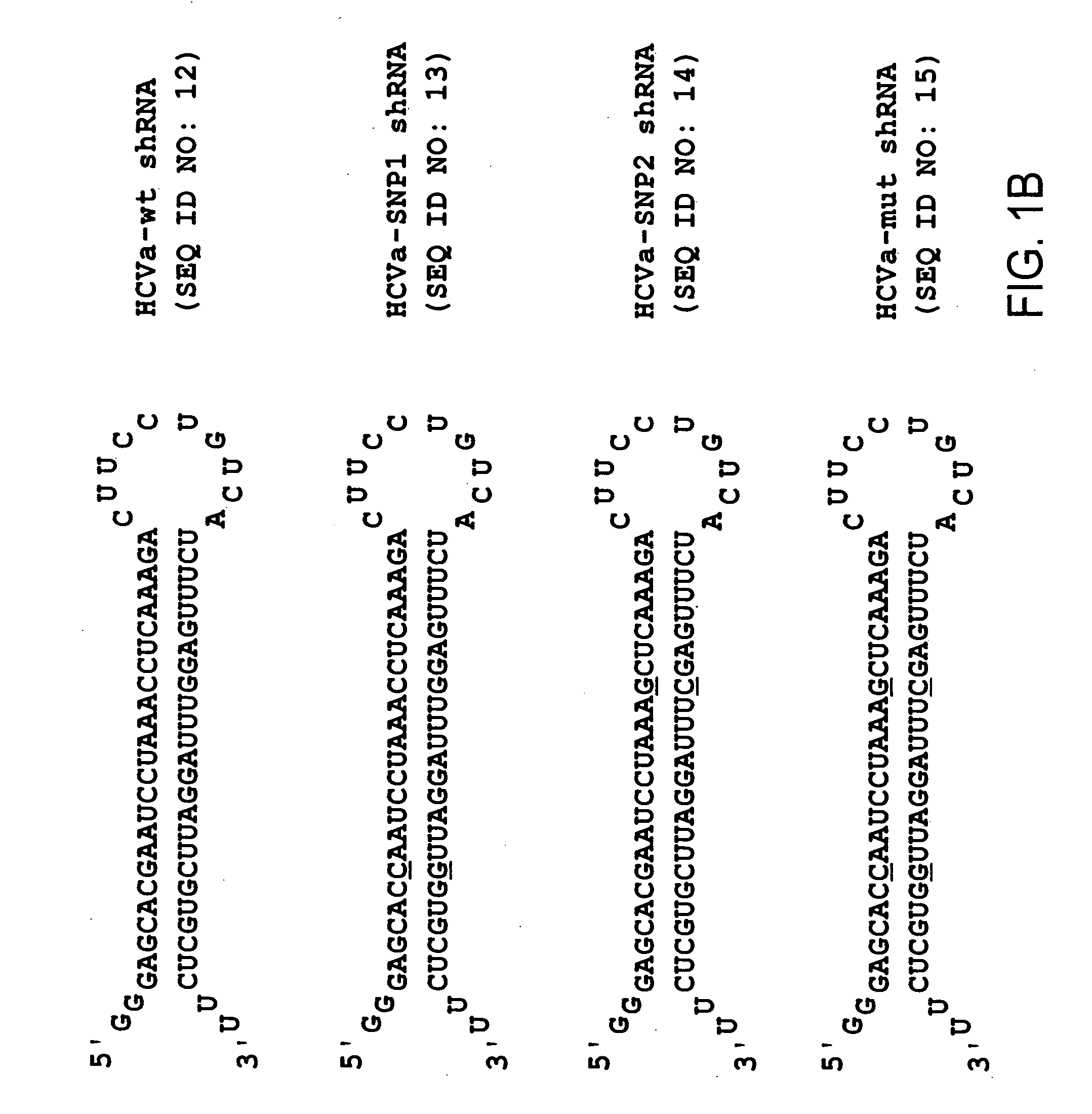Inhibition of viral gene expression using small interfering RNA
- Summary
- Abstract
- Description
- Claims
- Application Information
AI Technical Summary
Benefits of technology
Problems solved by technology
Method used
Image
Examples
example 1
Design and Construction of shRNA Expression Cassettes, T7 Transcription Reactions, and Reporter Gene Assays
[0105] Chemically synthesized oligonucleotides were obtained from IDT (Coralville, Iowa), resuspended in RNase- and pyrogen-free water (Biowhittaker), and annealed as described below. The following oligonucleotide pairs, for making shRNA, contain a T7 promoter element (doubly underlined), sense and antisense HCV IRES sequence and a miR-23 microRNA loop structure (reported to facilitate cytoplasmic localization [21, 22]).
T7-HCVa-wt fw:5′-taatacgactcactatagggagcacgaatcctaa(SEQ ID NO:1)acctcaaagaCTTCCTGTCAtctttgaggtttaggattcgtgctcTT-3′;T7-HCVa-wt rev:5′-AAgagcacgaatcctaaacctcaaagaTGACAGG(SEQ ID NO:2)AAGtctttgaggtttaggattcgtgct ccctatagtgagtcgtatta-3′
[0106] (T7 promoter sequence doubly underlined). T7 transcripts for HCVa-mut shRNA were identical with the exception that nucleotide changes (G→C and C→G) were incorporated into the synthesized oligonucleotides at the singly underli...
example 2
shRNA Inhibition of HCV IRES-Mediated Gene Expression in Human Tissue Culture Cells
[0118] In this study, short interfering RNAs (shRNAs and siRNAs) designed and constructed as in Example 1 to target a conserved region of the hepatitis C IRES were tested for their ability to inhibit HCV IRES-mediated reporter expression in human tissue culture cells.
[0119]FIG. 1A shows the HCV IRES target site (panel A) as well as the HCV shRNA resulting from T7 transcription of a template prepared from hybridized oligonucleotides containing a T7 promoter sequence and HCV IRES target (FIG. 1B). The underlined residues are those that were changed to generate the mutant HCV shRNAs. The shRNAs contain a mir-23 microRNA loop structure that was previously suggested to facilitate cytoplasmic localization [21, 22] and a 25 base pair RNA stem with two nucleotides at the 5′ (two guanines) and 3′ (two uridines) ends that may also hybridize though non Watson-Crick G:U base pairings. For vector-delivered shRNA...
example 3
shRNA Inhibition of HCV IRES-Mediated Gene Expression in a Mouse Model System
[0129] The ability of the HCV shRNA and HCV shRNA expression plasmid to inhibit target gene expression was extended to a mouse model system using hydrodynamic injection to deliver the nucleic acids to mouse liver. FIG. 5 shows the results of injecting a large volume of PBS (1.8 ml) containing pHCV dual Luc, pSEAP2, and shRNAs (10 fold excess over the target on a mass basis of either shRNA or pol III expression vectors expressing the shRNAs) into the tail veins of mice (n=4-5 mice). At the time points shown in FIG. 5B, luciferin was injected intraperitoneally and the mice were imaged with a high sensitivity, cooled CCD camera. (FIG. 5A shows representative mice chosen from each set (4-5 mice per set) at the 84 hour time point.) At all time points tested, HCV shRNA robustly inhibited luciferase expression ranging from 98% (84 hour time point) to 94% (48-hour time point) inhibition compared to mice injected w...
PUM
| Property | Measurement | Unit |
|---|---|---|
| Nucleic acid sequence | aaaaa | aaaaa |
| Gene expression profile | aaaaa | aaaaa |
Abstract
Description
Claims
Application Information
 Login to View More
Login to View More - R&D
- Intellectual Property
- Life Sciences
- Materials
- Tech Scout
- Unparalleled Data Quality
- Higher Quality Content
- 60% Fewer Hallucinations
Browse by: Latest US Patents, China's latest patents, Technical Efficacy Thesaurus, Application Domain, Technology Topic, Popular Technical Reports.
© 2025 PatSnap. All rights reserved.Legal|Privacy policy|Modern Slavery Act Transparency Statement|Sitemap|About US| Contact US: help@patsnap.com



